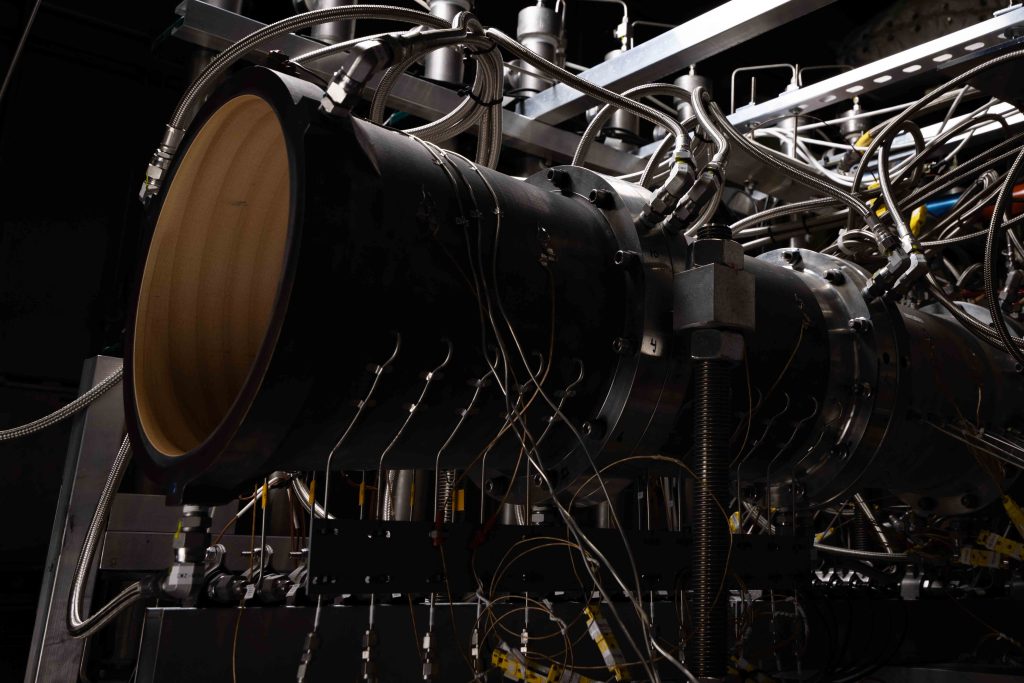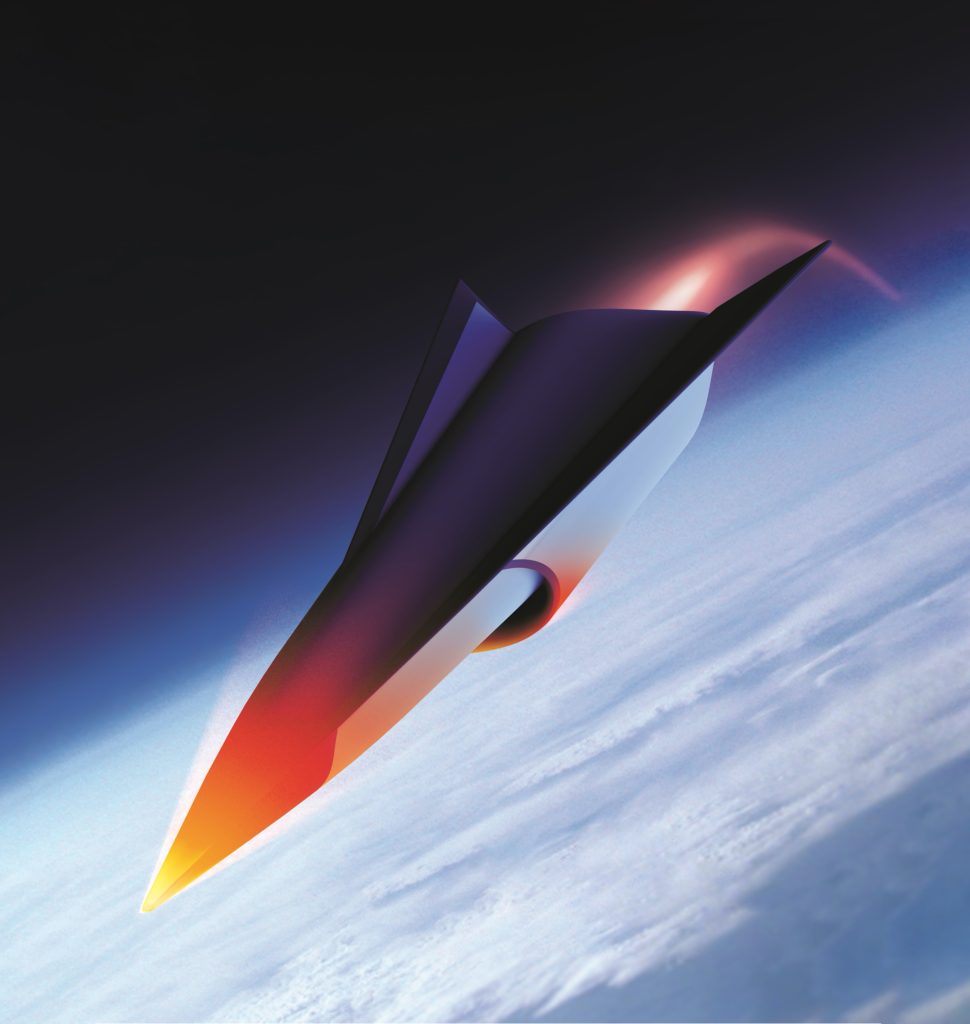Aerospace manufacturer GE Aerospace has successfully demonstrated a new hypersonic dual-mode ramjet engine.
According to the company, the new ramjet could unlock high-speed flight and extended range across various multi-mission aircraft.
Following testing in the clean air, continuous flow, high-speed propulsion testing facility in Evendale, OH, the hypersonic engine reportedly exceeded performance expectations. It demonstrated the robust operation of a dual-mode ramjet and achieved a threefold increase in airflow, compared to previously flight-tested hypersonic technology demonstrators.
While the company has not disclosed whether additive manufacturing was utilized in this project, GE Aerospace is a long-time adopter of the technology. It is advancing industrial 3D printing through its Colbrium Additive division (formerly GE Additive).
The new ramjet engine began testing in March this year, just 11 months after design efforts began. Given the speed of this development process, it is likely that additive manufacturing has been leveraged along the process chain. Additive manuring is well known for reducing lead times in rocket engine production.
In a recent interview, NASA’s Paul Gradl explained that 3D printing can reduce rocket engine manufacturing time from month to weeks, allowing for rapid testing and iteration. Elsewhere, aerospace companies such as Lockheed Martin and Aerojet Rocketdyne have leveraged additive manufacturing to produce 3D printed ramjet and scramjet engines.
Returning to the latest hypersonic engine , “The technology’s robust performance paves the way for the next phase of development,” explained Mark Rettig, vice president & general manager of Edison Works Business & Technology Development at GE Aerospace. These next steps will focus on continued testing and technology demonstration, aligning with the firm’s roadmap for integrated high-speed propulsion solutions

Advancing ramjet technology
Development of the hypersonic engine is supported by a collaboration between engineers from hypersonic propulsion specialist Innoveering, which GE Aerospace acquired in 2022, and the GE Aerospace Research Center.
“The rapid progression from design to testing underscores our commitment to driving innovation in hypersonic technologies,” commented Amy Gowder, president and CEO of Defense & Systems at GE Aerospace. “This milestone not only shows the exceptional talent and dedication of our team but also reaffirms our position as a leader in the pursuit of hypersonic flight.”
Ramjets possess very few moving parts and a complex interior structure. They use the forward momentum of the aircraft to ram air into the combustion chamber. This air is then compressed through a series of shockwaves until it becomes subsonic in the engine’s combustion section.
This new ramjet demonstration marks the latest milestone in GE Aerospace’s engine portfolio. The company boasts an installed base of 44,000 commercial and 26,000 military aircraft engines.
Last year, the company demonstrated a novel hypersonic dual-mode ramjet (DMRJ) rig test that used rotating detonation combustion (RDC). Said to be the first test of its kind, GE Aerospace claimed that this novel technology could enable more efficient high-speed, long-range flight than current scramjet engines.
RDC technology combusts fuel through detonation waves. GE Aerospace hopes its RDC architecture will power super-efficient hypersonic vehicles with expanded range, and speeds exceeding Mach 5.

GE Aerospace leverages industrial 3D printing
While the manufacturing process of the new ramjet engine has not been disclosed, GE Aerospace is well-positioned to leverage metal 3D printing. Colibrium Additive, a GE Aerospace company which recently rebranded from GE Additive, possesses extensive experience in 3D printing for aerospace applications.
During an interview at RAPID + TCT 2024, the company’s CTO Chris Schuppe outlined Colibrium’s close relationship with GE Aerospace. He explained that its role as an in-house 3D printing expert gives both Colibrium and GE Aerospace a unique advantage. “We’ve developed a lot of technology that specifically addressed their needs,” he added.
In particular, Schuppe highlighted the production of 3D printed heat exchangers for aircraft engines. Here, additive manufacturing overcomes challenges related to CAD modeling and quality inspection. Testing feedback can be efficiently integrated into the CAD model, reducing the number of iterations from ten to just two.
Famously, GE Additive developed a 3D printed fuel nozzle. Since launching in 2017, this part has become a notable case study of additive manufacturing for aerospace applications. The company has 3D printed over 140,000 of these components, which are 25% lighter and 15% more fuel efficient than CFM56 alternatives.
Elsewhere, the company has worked with US aerospace manufacturer Boom Supersonic to develop a 3D printed propulsion system capable of reaching speeds of 1,300 mph. This week at the Farnborough International Airshow, Boom is expected to provide an update on it’s work. More recently, Colibrium’s AddWorks consultancy team partnered with ultra-quiet vertical flight system developer MagLev Aero to provide 3D printing technology and material support. The team’s expertise supported the development of the proprietary MagLev HyperDrive aero propulsion platform for electric vertical take-off and landing (eVTOL) aircraft.

3D printing hypersonic engines
Additive manufacturing has been increasingly adopted for the development and production of hypersonic jet engines.
Last month, additive manufacturing service provider Sintavia was awarded a contract by the US Department of Defense (DoD) to develop 3D printed hypersonic propulsion components. Through the agreement, the company will validate the quality and operational processes required for designing and additively manufacturing the critical engine parts.
Expected to run until 2025, the contract was granted through DoD’s Growing Additive Manufacturing Maturity for Airbreathing Hypersonics (GAMMA-H) challenge. This seeks to identify new manufacturing processes that meet the geometric and temperature requirements of modern hypersonic airbreathing weapon systems.
Elsewhere, Aerojet Rocketdyne was recently awarded a $22 million DoD contract to 3D print a hypersonic propulsion system prototype. A subsidiary of defense contractor L3Harris Technologies, the firm’s contract was also delivered through the GAMMA-H challenge.
Announced in May 2024, Aerojet Rocketdyne expects it will take 36 months to deliver the prototype. The company will streamline the production workflow by consolidating the essential steps of the scramjet manufacturing process. The aerospace manufacturer’s President, Ross Niebergall, believes this will create a more secure and efficient supply chain, enabling schedule and cost improvements.
Want to help select the winners of the 2024 3D Printing Industry Awards? Join the Expert Committee today.
What does the future of 3D printing hold?
What near-term 3D printing trends have been highlighted by industry experts?
Subscribe to the 3D Printing Industry newsletter to keep up to date with the latest 3D printing news.
You can also follow us on Twitter, like our Facebook page, and subscribe to the 3D Printing Industry Youtube channel to access more exclusive content.
Featured image shows GE Aerospace’s hypersonic dual-mode ramjet engine. Photo via GE Aerospace.


